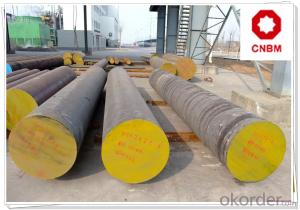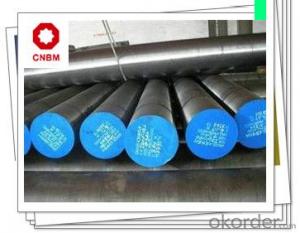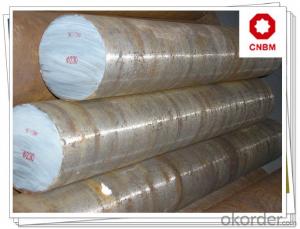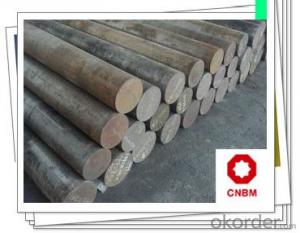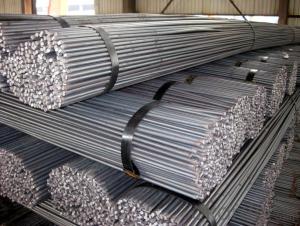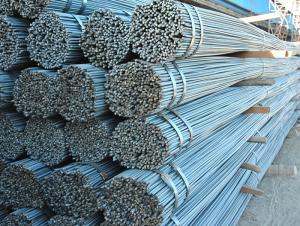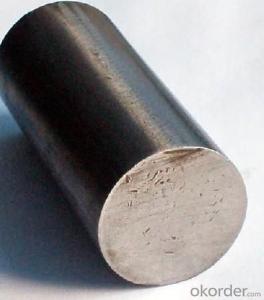Carbon Steel Bar 1035 S35C C35
- Loading Port:
- Shanghai
- Payment Terms:
- TT OR LC
- Min Order Qty:
- 30 m.t.
- Supply Capability:
- 120000 m.t./month
OKorder Service Pledge
OKorder Financial Service
You Might Also Like
Carbon Steel Bar 1035 S35C C35
Product Description
1, Diameter: 8mm-250mm rounds
5mm-9mm rods
2, Length: 2m, 3m, 5.8m, 6m or customized
3, Standard: GB, ASTM, AISI, SAE, DIN, JIS, EN
OEM technology - send detailed technical parameters for accurate quotation.
2, Produce Process: smelt iron - EAF smelt billet - ESR smelt billet -
hot rolled or forged to get the steel round bar and plate
3, Heat Treatment: annealing, normalizing, tempering, quenching
4, Surface Treatment: Black, Polished, Galvanized
5, Quality Assurance: We accept third party inspection for all orders.
You can ask testing organizations such as SGS, BV, etc. to test our products before shipping.
Products Show
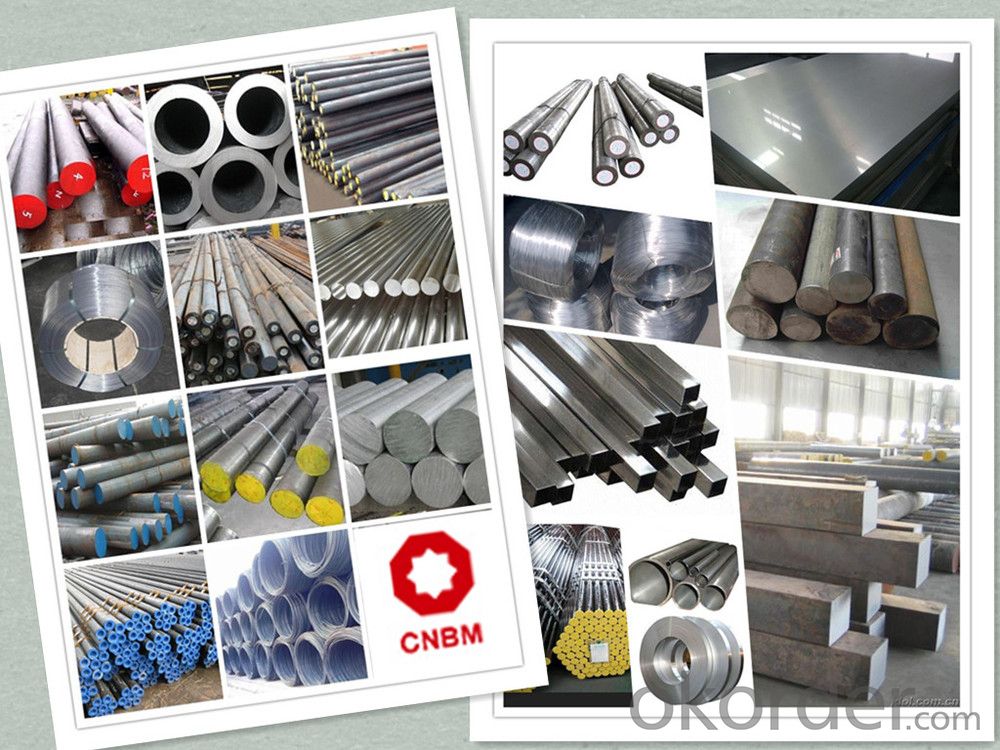
Product Overviews
Description | Carbon Steel Rod/Carbon Steel Bar,carbon steel rod,carbon steel shaft,mild steel bar, Mild steel shaft,ms bar | |
Material | ASTM | 1005, 1006, 1008, 1010, 1015, 1020, 1025, 1030, 1035, 1040, 1045, 1050, 1055, 1060, 1065, 1070, 1080, 1084, 1016, 1022 |
DIN | Ck10, Ck15, Ck22, Ck25, Ck30, Ck35, Ck40,Ck45, Ck50, 30Mn4, 40Mn4 | |
BS | 040A04, 095M15, 045M10, 080A40, 045M10, 080M50 | |
JIS | S09CK, S9CK, S10C, S15C, S20C, S25C, S30C, S35C, S40C, S45C, S50C, S55C, S58C, SB45, S30C, S40C, S45C, S53C | |
Standard | GB/T799, ASTM A29, A108, A321, A575, BS970, DIN1652, JIS G4051 | |
| Section shape | Round, square, hexagonal, flat, angle | |
| Surface | Black painted, galvanized | |
Specifications | Round bar | Diameter: 4mm~1200mm |
Angle bar | Size: 3mm*20mm*20mm~12mm*800mm*800mm | |
Square bar | Size: 4mm*4mm~100mm*100mm | |
Flat bar | Thickness: 2mm~100mm | |
Width: 10mm~500mm | ||
| Hexagonal | Size: 4mm~800mm | |
Length | 2m, 4m, 5.8m, 6m, 11.8m, 12m or as required. | |
Work Shop
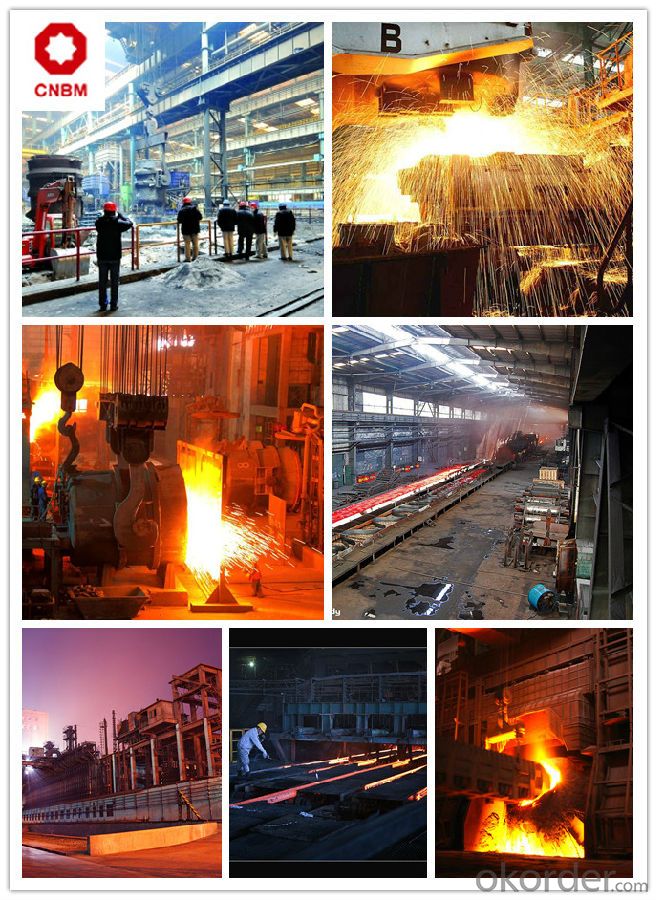
Company Information
CNBM International Corporation is the most important trading platform of CNBM group.
Whith its advantages, CNBM International are mainly concentrate on Cement, Glass, Iron and Steel, Ceramics industries and devotes herself for supplying high qulity series of refractories as well as technical consultancies and logistics solutions.

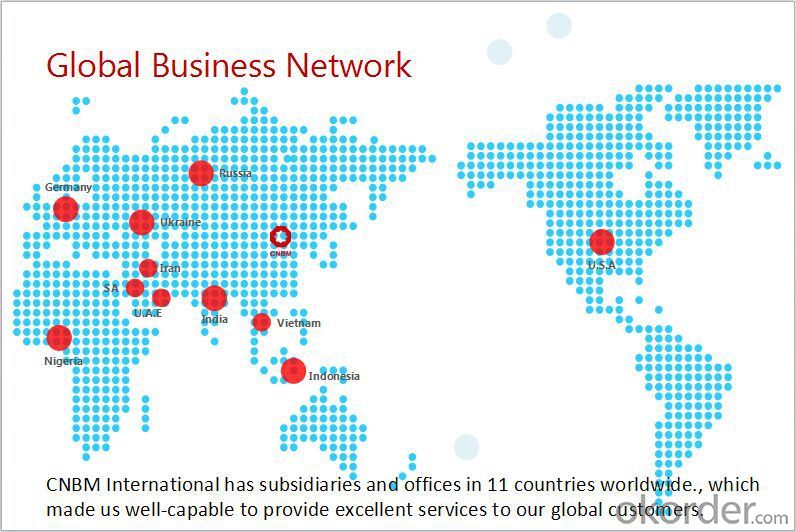
FAQ
1, Your advantages?
professional products inquiry, products knowledge train (for agents), smooth goods delivery, excellent customer solution proposale
2, Test & Certificate?
SGS test is available, customer inspection before shipping is welcome, third party inspection is no problem
3, Factory or Trading Company?
CNBM is a trading company but we have so many protocol factories and CNBM works as a trading department of these factories. Also CNBM is the holding company of many factories.
4, Payment Terms?
30% TT as deposit and 70% before delivery.
Irrevocable L/C at sight.
5, Trading Terms?
EXW, FOB, CIF, FFR, CNF
6, After-sale Service?
CNBM provides the services and support you need for every step of our cooperation. We're the business partner you can trust.
For any problem, please kindly contact us at any your convenient time.
We'll reply you in our first priority within 24 hours.
Packaging & Delivery
1, Packaging: seaworthy package or as required
2, Delivery: 35-45 days or based on quantity
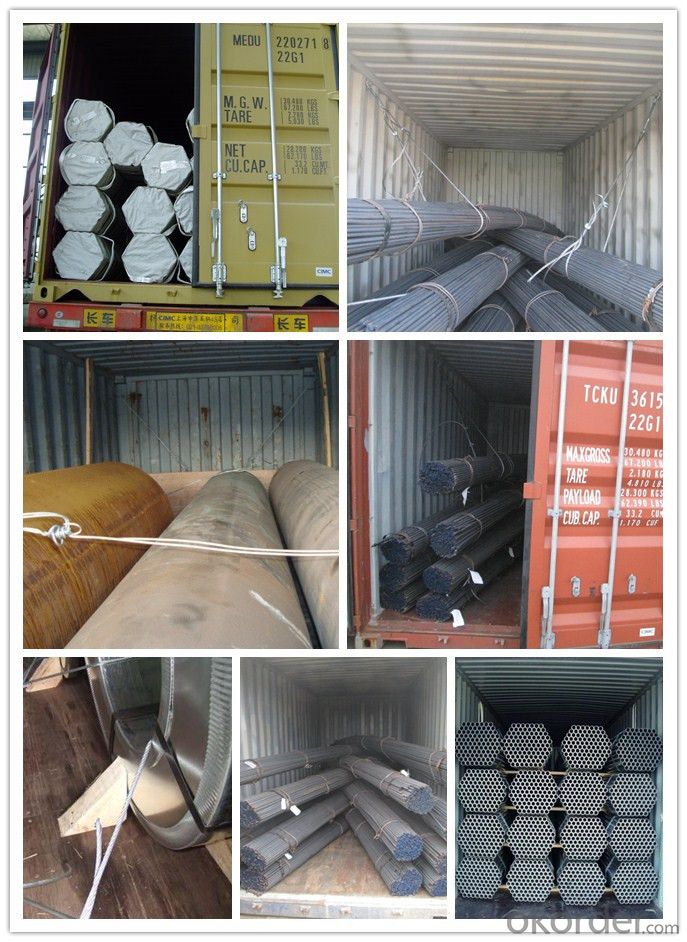
- Q:What are the advantages of using steel round bars in construction?
- Using steel round bars in construction offers several advantages: Firstly, steel round bars are known for their exceptional strength and durability. They possess a high tensile strength, allowing them to bear heavy loads and provide robust support. This makes them ideal for construction projects that require structural integrity and stability. Secondly, steel round bars provide versatility in construction. They come in various sizes and grades, allowing for easy shaping, bending, and welding to fit specific design requirements. This adaptability makes them suitable for a wide range of applications, such as building frameworks, reinforcing concrete structures, or even adding decorative elements. Thirdly, steel round bars offer cost-effectiveness in construction. They have a long lifespan and require minimal maintenance due to their resistance to corrosion, weathering, and pests. Moreover, their strength allows for the use of lighter construction materials, potentially reducing overall project costs. Additionally, steel round bars have excellent fire-resistant properties, making them a safe choice for construction. They do not burn, melt, or emit toxic fumes under high temperatures, which is essential in preventing the spread of fire and ensuring occupant safety. Furthermore, using steel round bars in construction contributes to sustainability. Steel is 100% recyclable and using recycled steel helps minimize waste and conserve natural resources. The recycling process also requires less energy compared to manufacturing steel from raw materials, making it an eco-friendly choice. Moreover, steel round bars are readily available in the market, making them easily accessible for construction projects. Additionally, their production undergoes strict quality control measures, guaranteeing consistent and reliable material properties. This ensures the structural integrity and safety of the constructed buildings or infrastructures. In conclusion, the advantages of using steel round bars in construction include their strength, versatility, cost-effectiveness, fire resistance, sustainability, availability, and quality control. These attributes make them a popular choice for builders and engineers seeking reliable and efficient materials for their construction projects.
- Q:Are steel round bars suitable for marine propeller applications?
- Yes, steel round bars are suitable for marine propeller applications. Steel is a commonly used material for marine propellers due to its high strength, durability, and corrosion resistance properties. Steel round bars can be machined and formed into the desired shape for propeller blades, providing excellent performance in a marine environment. Additionally, steel can withstand the high stresses and forces experienced by propellers in water, making it a reliable choice for marine propulsion systems.
- Q:Can steel round bars be used for making suspension components?
- Yes, steel round bars can be used for making suspension components. Steel is a common material used in the manufacturing of suspension components due to its high strength and durability. Steel round bars can be machined or forged into various shapes and sizes to meet the specific requirements of suspension components such as control arms, sway bars, and tie rods. The use of steel round bars ensures the suspension components can withstand the forces and stresses encountered during vehicle operation, providing stability, control, and safety.
- Q:Can steel round bars be used for making engine parts?
- Yes, steel round bars can be used for making engine parts. Steel round bars are often used in the manufacturing of engine components due to their high strength, durability, and resistance to heat and corrosion. They can be machined into various shapes and sizes to create engine parts such as crankshafts, camshafts, connecting rods, and valves. The use of steel round bars ensures the required mechanical properties and structural integrity needed for engine performance and reliability. Additionally, steel round bars can be heat-treated and surface-treated to further enhance their properties, making them suitable for engine applications.
- Q:What are the different types of steel round bar surface treatments for improved wear resistance?
- There are several different types of steel round bar surface treatments that can be applied to improve wear resistance. These treatments are designed to enhance the hardness, toughness, and overall durability of the steel, making it more resistant to wear and corrosion. Some of the most common surface treatments for steel round bars include: 1. Nitriding: This treatment involves exposing the steel to a nitrogen-rich environment at high temperatures. This forms a hard nitride layer on the surface, which improves wear resistance and provides enhanced hardness. 2. Carburizing: Carburizing is a process that involves introducing carbon into the surface of the steel to create a high-carbon layer. This layer increases hardness and wear resistance, making it suitable for applications that require high strength and durability. 3. Induction hardening: Induction hardening is a heat treatment process that selectively hardens the surface of the steel. This is achieved by heating the steel using an induction coil and then rapidly quenching it. The resulting hardened layer provides excellent wear resistance while maintaining the toughness of the core. 4. Shot peening: Shot peening involves bombarding the steel surface with small metal or ceramic particles at high velocity. This process creates compressive stresses on the surface, which improves fatigue life and wear resistance. 5. Thermal spraying: In thermal spraying, a coating material is melted and sprayed onto the steel surface using a flame or plasma torch. This creates a protective layer that offers enhanced wear resistance and corrosion protection. 6. PVD/CVD coatings: Physical Vapor Deposition (PVD) and Chemical Vapor Deposition (CVD) coatings involve depositing a thin layer of material onto the steel surface. These coatings provide excellent wear resistance, low friction, and improved corrosion protection. 7. Hard chrome plating: This process involves electroplating a layer of chromium onto the steel surface. Hard chrome plating offers high hardness, wear resistance, and corrosion protection. It's important to note that the choice of surface treatment depends on the specific application requirements and the type of wear resistance needed. Each treatment has its own advantages and limitations, and it is crucial to consider factors such as cost, environmental impact, and performance characteristics when selecting the most suitable treatment for a given steel round bar.
- Q:What are the main differences between wrought round steel, hot rolled round steel and cold drawn round steel? Where are they used separately?
- Cold drawn round steel (don't know, you mean can not cold dial round bar). But I understand by the cold dial round bar Also mainly used in hardware parts processing and production. Such as hinge shaft core or other surface and diameter requirements of production and processing occasions.
- Q:Can steel round bars be used in the production of bearings?
- No, steel round bars cannot be used in the production of bearings. Bearings require specific materials that can withstand high loads and offer low friction. Steel round bars are not designed with the necessary characteristics to fulfill these requirements. Instead, bearings are typically made from specialized materials such as chrome steel, stainless steel, or ceramic materials, which offer excellent durability and performance under the demanding conditions in which bearings operate.
- Q:What are the advantages of using aluminum-magnesium alloy steel round bars?
- There are several advantages of using aluminum-magnesium alloy steel round bars: 1. Lightweight: Aluminum-magnesium alloy steel has a lower density compared to traditional steel, making it a lightweight material. This characteristic is advantageous in applications where weight reduction is crucial, such as in aerospace or automotive industries. It allows for improved fuel efficiency and increased payload capacity. 2. Corrosion resistance: Aluminum-magnesium alloy steel has excellent corrosion resistance properties. The addition of magnesium enhances the alloy's ability to withstand harsh environments, including exposure to moisture, chemicals, and saltwater. This makes it an ideal choice for marine applications or in areas with high humidity or corrosive atmospheres. 3. High strength-to-weight ratio: Despite its lightweight nature, aluminum-magnesium alloy steel exhibits high strength. It offers a superior strength-to-weight ratio compared to other materials, allowing for the construction of sturdy and durable structures. This advantage is particularly valuable in applications such as construction, where both strength and weight are important factors. 4. Excellent machinability: Aluminum-magnesium alloy steel is easy to machine, making it suitable for a wide range of fabrication processes. It can be easily cut, drilled, and welded, allowing for efficient manufacturing and assembly. This ease of machining not only saves time and costs but also enables complex designs and customization. 5. Thermal conductivity: Aluminum-magnesium alloy steel has excellent thermal conductivity, allowing for efficient heat transfer. This property is valuable in various applications, including heat exchangers, cooling systems, and electrical conductors. It helps dissipate heat quickly, preventing overheating and improving overall performance. 6. Recyclability: Aluminum-magnesium alloy steel is highly recyclable, making it an environmentally friendly choice. It can be easily melted down and reused, reducing the demand for raw materials and minimizing waste. Recycling aluminum-magnesium alloy steel requires significantly less energy compared to primary production, making it a sustainable option. Overall, the advantages of using aluminum-magnesium alloy steel round bars make it a versatile and cost-effective material for a wide range of applications. Its lightweight nature, corrosion resistance, high strength-to-weight ratio, excellent machinability, thermal conductivity, and recyclability make it a preferred choice in industries where these properties are essential.
- Q:What are the common defects found in steel round bars?
- Steel round bars may possess several common defects, including surface cracks, internal voids, inclusions, segregation, and dimensional variations. Surface cracks can arise from manufacturing processes or improper handling and transportation, resulting in compromised structural integrity and reduced load-bearing capacity. Internal voids, also known as blowholes or cavities, emerge as empty spaces within the steel caused by trapped gases during solidification. These voids can detrimentally affect the mechanical properties of the bar, rendering it more susceptible to failure under stress. Inclusions, non-metallic particles or impurities, may be present in the steel. They may originate from raw materials used in production or contaminants introduced during manufacturing. Inclusions diminish the strength and ductility of the steel and can serve as starting points for cracks. Segregation refers to the uneven distribution of elements within the steel. It can occur during solidification, leading to areas of the bar with distinct chemical compositions. Consequently, variations in mechanical properties, such as hardness and toughness, arise, resulting in inconsistent performance. Defects can also manifest as dimensional variations, such as out-of-roundness or fluctuations in diameter. These variations impact the bar's fit and functionality, especially in applications requiring precise dimensions. To ensure the quality and reliability of steel round bars, particularly in applications demanding high strength and performance, it is crucial to identify and rectify these defects. Regular inspections, implementation of quality control measures, and adherence to industry standards and specifications aid in minimizing these defects and upholding the integrity of steel round bars.
- Q:What is the carbon content in steel round bars?
- The carbon content in steel round bars varies depending on the grade and type of steel being used. Generally, carbon steel round bars contain carbon in the range of 0.08% to 1.5%. Higher carbon content provides increased strength and hardness, but it also decreases weldability and ductility. The specific carbon content in steel round bars is determined during the manufacturing process and can be specified by the customer based on their desired mechanical properties and application requirements.
1. Manufacturer Overview |
|
|---|---|
| Location | |
| Year Established | |
| Annual Output Value | |
| Main Markets | |
| Company Certifications | |
2. Manufacturer Certificates |
|
|---|---|
| a) Certification Name | |
| Range | |
| Reference | |
| Validity Period | |
3. Manufacturer Capability |
|
|---|---|
| a)Trade Capacity | |
| Nearest Port | |
| Export Percentage | |
| No.of Employees in Trade Department | |
| Language Spoken: | |
| b)Factory Information | |
| Factory Size: | |
| No. of Production Lines | |
| Contract Manufacturing | |
| Product Price Range | |
Send your message to us
Carbon Steel Bar 1035 S35C C35
- Loading Port:
- Shanghai
- Payment Terms:
- TT OR LC
- Min Order Qty:
- 30 m.t.
- Supply Capability:
- 120000 m.t./month
OKorder Service Pledge
OKorder Financial Service
Similar products
New products
Hot products
Related keywords


